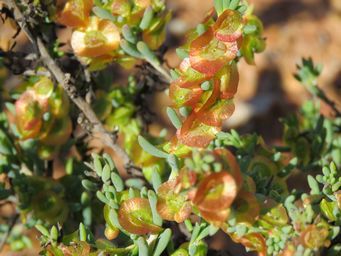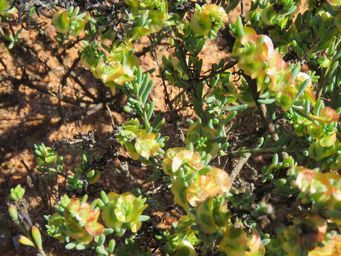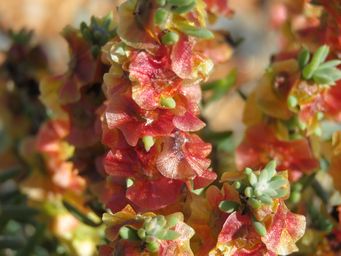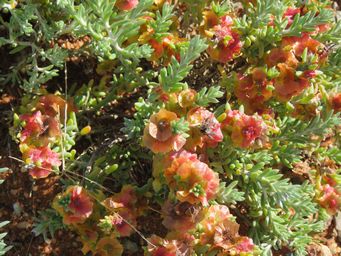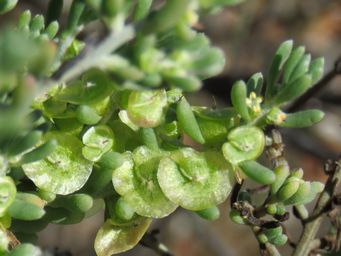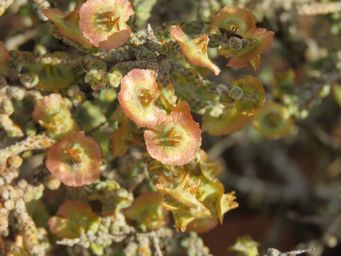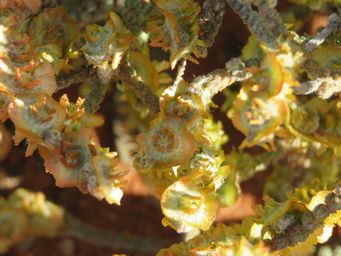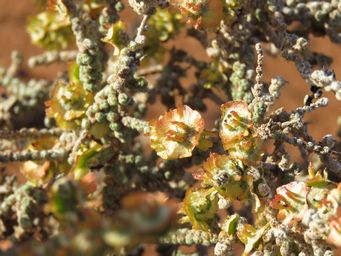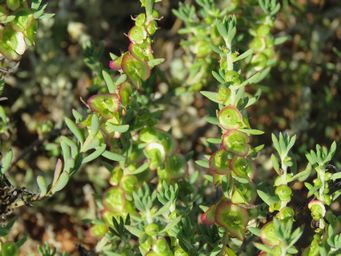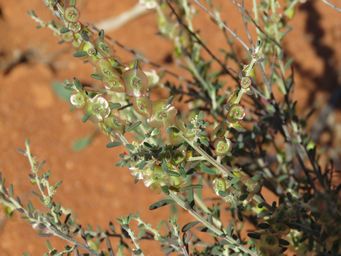Australia So Much to See
Male and female flowers, fruit filled with initially bright orange seeds like small eggs. The vibrant colour fades.
Plant toxic to cattle. Outer coating of seed used by Aborigines after treating. In some areas, Aborigines ground the seeds into a flour after special treatments to leach out the toxins. Early settlers were poisoned trying them. See more here.
Bridgetown, South West Region, Western Australia and occurs through the South West from Perth to Albany

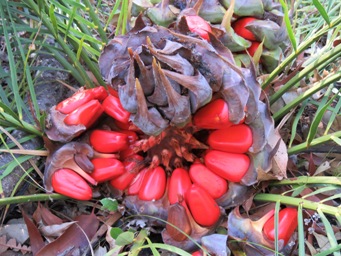
Maireana erioclada, Rosy Bluebush
Wings may be a vivid pink. Five vertical wings run length of tube and are united at apex with horizontal
wing; perianth lobes prominently woolly. Centre of the perianth has a star like appearance. Shrub is up to sixty centimetres
high with woolly branches. Leaves narrow and fleshy to ten millimetres with a rounded tip, glabrous, alternate and have a bluish appearance
with a pink tip. Perianth yellow in early stages (above left).
July August
Newman Rocks, Lake Johnston and along the Eyre Highway
in the Goldfields region, Western Australia and found through the Great Southern and Goldfields and into the Wheatbelt regions
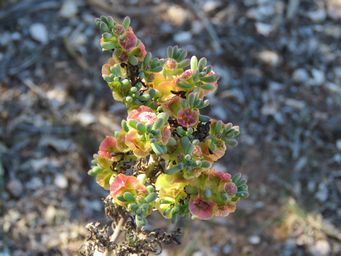
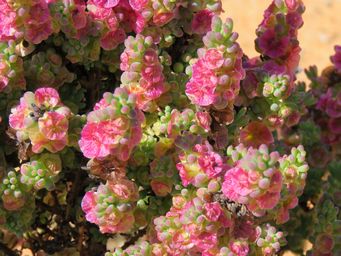

Maireana, a genus of perennial shrubs found mainly through the semi-arid areas across most states. Previously in the Kochia genus, these were reassigned to the genus Maireana in 1975. These are generally salt and drought tolerant.
There are many
similar species, and my photography does not show all the points needed for identification, so my identifications are not necessarily
all accurate.
Flowers are insignificant, and are surround by an eye-catching wing. After pollination and fertilisation,
the ovary develops into a fruiting body, which may have a single hairless horizontal wing with a radial slit, or a tube with vertical
wings. This is the most noticeable stage, and the wings can change colour as the fruit matures, going from green or yellow to red
for example. Foliage is fleshy (succulent), and in most species, leaves alternate. Many species have separate male and
female plants.
Maireana convexa, Mulga Bluebush
The fruit is convex (domed), with central dome woolly. The wing has a single slit. Long
succulent leaves are sparsely hairy, and alternate along the stems which have short hairs. Wing and fruit are green or yellow. It is usually found growing with Mulga (Acacia aneura).
Occurs in the Gascoyne and Mid West regions, and into the Goldfields.
Photo at right, taken in September at Sandstone, is possibly Maireana convexa, but the photo is not clear enough to be certain.
Maireana georgei, Satiny Bluebush, Golden Bluebush, George’s Bluebush.
Photos here may not all be of Maireana georgei, but if any are
not, they are very similar. This species is widespread. Top of fruit is flat with few hairs. Fruit large, and including
the wing, can be up to fifteen millimetres across. Tube is thick-walled and cone or cup shaped. A compact low shrub with
finer leaves than Maireana convexa.
Seen in August
Photographed through the Goldfields. Occurs through much of the Pilbara, Gascoyne,
Mid West, Wheatbelt and Goldfields with the except of the southernmost parts, and in a few locations in the Kimberley region.
Maireana carnosa, Rope Plant or Cottony Bluebush
Short upright plants with hairy foliage spiralling around the stems. Tiny orange
flowers emerge from the thick silky hairs between the leaves.
September
Mullewa, Mid West region, Western Australia, and found through
the Pilbara, Gascoyne, Mid West, Wheatbelt and Goldfields regions.
Seen here with Goodenia rosea.

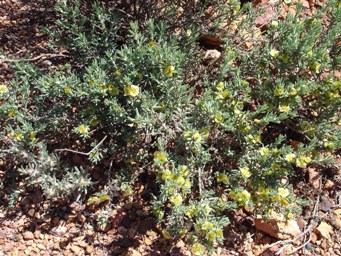
Maireana glomerifolia, Ball Leaf Bluebush, Fleshy Bluebush.
Perianth mostly yellow with pink tips to wings, a conical tube at rear
of flower, and around five (can be four to six) erect appendages (called processes) in centre, with these also being pink tipped. A small shrub with foliage that covers the stems, in the shape of balls hence the common name of Ball Leaf.
August
Lake Douglas,
Kalgoorlie, Goldfields region, Western Australia, and is found in inland areas of the Gascoyne, Mid West and Wheatbelt regions, and
into the northern Goldfields region, favouring dry saline areas.
